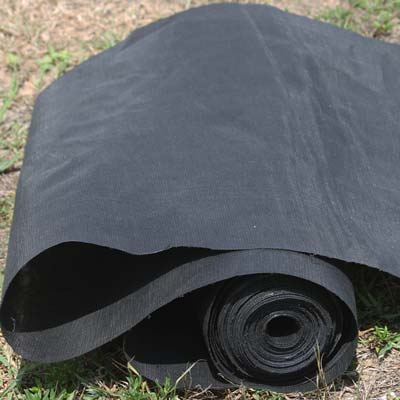I.Introduction
Research Background and Significance
Non-woven geotextile fabric has become an essential material in modern civil engineering due to its versatility and cost-effectiveness. As environmental concerns grow and infrastructure development accelerates, understanding the mechanical and hydraulic properties of geotextile is critical for sustainable engineering practices. The tensile strength and permeability of these materials significantly influence their performance in applications such as filtration, separation, and reinforcement.

Current Research Status
Globally, researchers have explored the mechanical properties and fluid behavior of geotextiles extensively. Studies reveal that the manufacturing process and material composition play key roles in determining the performance of non-woven geotextile fabric. However, a comprehensive analysis of the relationship between tensile strength and permeability is still underdeveloped, leaving room for further investigation.
Research Objectives and Scope
This study focuses on evaluating the tensile strength and permeability of non-woven geotextile fabric, aiming to establish a better understanding of their interdependence. By analyzing experimental results, the research seeks to provide guidance for selecting the best geotextile for various engineering applications.
II.Fundamental Properties of Non-Woven Geotextile Fabric
Definition and Classification
Non-woven geotextile fabric is a type of geotextile made by bonding fibers mechanically, thermally, or chemically, without weaving. These fabrics are typically classified based on their production methods, such as needle-punched, heat-bonded, or spun-bonded varieties.
Key Performance Indicators
The main performance indicators of non-woven geotextile fabric include tensile strength, permeability, elongation, and pore size distribution. These properties determine the suitability of the fabric for specific engineering applications.
Factors Influencing Performance
Material composition, fiber bonding methods, and fabric thickness significantly affect the tensile strength and permeability of non-woven geotextile fabric. Additionally, environmental factors such as temperature and moisture can alter the material’s properties over time.
III.Tensile Strength Testing and Analysis
Definition and Testing Standards
Tensile strength is the maximum stress a material can withstand before failure. The testing of geotextile tensile strength follows standards such as ASTM D4632, which ensures uniformity and reliability in experimental results.
Materials and Equipment
The study utilized high-quality non-woven geotextile fabric samples and a universal tensile testing machine equipped with precise measurement tools to capture stress-strain data.
Methodology
The fabric samples were cut into standard dimensions, clamped into the testing device, and subjected to uniaxial tension at a controlled rate. The force and elongation were recorded until the fabric failed.
Results and Analysis
The experimental results revealed that non-woven geotextile fabric exhibits significant variability in tensile strength based on fiber density and bonding methods. Higher-density fabrics demonstrated superior tensile strength, making them the best geotextile choice for load-bearing applications.
IV.Permeability Testing and Analysis
Definition and Testing Standards
Permeability refers to the ability of a material to allow fluid to pass through. Standards like ASTM D4491 guide the evaluation of geotextile permeability, ensuring consistency in test procedures.
Materials and Equipment
A permeameter was used to test the permeability of non-woven geotextile fabric under controlled hydraulic conditions. Water flow rates were measured at different pressure levels.
Methodology
Fabric samples were secured in the permeameter, and water was allowed to flow through under a constant head. The flow rate and hydraulic gradient were recorded to calculate permeability.
Results and Analysis
The study showed that thinner non-woven geotextile fabrics exhibited higher permeability, while thicker fabrics provided better filtration capabilities. The results highlight the need to balance permeability and mechanical strength in practical applications.
V.Relationship Between Tensile Strength and Permeability
Synergistic Performance Analysis
Tensile strength and permeability often work together to influence the overall performance of non-woven geotextile fabric. High tensile strength ensures structural integrity, while optimal permeability supports effective fluid flow.
Factors Affecting Their Relationship
Fiber density, bonding methods, and fabric thickness significantly affect the relationship between tensile strength and permeability. Proper manufacturing techniques are essential to produce the best geotextile for specific engineering needs.
Coupling Mechanisms
The study suggests that the coupling between tensile strength and permeability arises from the interplay between fiber orientation and pore structure. This relationship can be optimized by adjusting production parameters to meet diverse engineering requirements.
VI.Engineering Applications
Typical Uses in Engineering
Non-woven geotextile fabric is widely used in drainage systems, road construction, and erosion control. Its ability to provide both mechanical reinforcement and hydraulic functionality makes it a valuable material.
Importance of Key Properties
In real-world applications, tensile strength ensures the durability of geotextile under load, while permeability prevents waterlogging and soil erosion. Balancing these properties is crucial for achieving long-term performance.
Technical Requirements
Engineers must carefully evaluate project-specific requirements, such as load capacity and hydraulic conductivity, to select the most suitable non-woven geotextile fabric.
VII.Conclusions and Future Perspectives
Key Findings
The study concludes that non-woven geotextile fabric offers a unique combination of tensile strength and permeability, which can be tailored to specific applications. Higher-density fabrics are ideal for structural reinforcement, while thinner fabrics excel in filtration and drainage.
Limitations and Future Research
This research highlights the need for further studies to explore the long-term behavior of geotextile under varying environmental conditions. Future work should focus on developing innovative manufacturing techniques to enhance the performance of the best geotextile products.
By bridging the gap between tensile strength and permeability, this study provides valuable insights for optimizing non-woven geotextile fabric in engineering applications.
